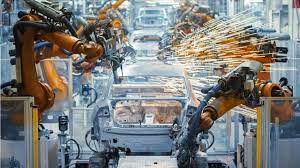NEW DELHI, Sept 13: After experiencing subdued Q-1 (April-June 2021-22), outlook seems to have improved significantly in Q-2 (July-September 2021-22), FICCI’s latest quarterly survey (Q2) on manufacturing has revealed.
The percentage of respondents reporting higher production in the second quarter of 2021-22 (July-September 2021-22) was much above the 50 per cent mark- around 61 per cent. This was significantly higher than the similar percentage of last year’s Q-2 quarter (around 24 per cent).
The assessment is also reflective in order books as 72 per cent of the respondents in July-September 2021-22 expected a higher number of orders vis-vis April-June 2021-22.
However, the survey noticed a high percentage of respondents experiencing rising costs of doing business and production. The cost of production as a percentage of sales for manufacturers in the survey has risen for 80 per cent respondents in Q-1 2021-22.
This is considerably higher than that reported in Q4 2020-21, where 72 per cent respondents recorded an increase in their production costs. Industry respondents attributed the hike in production costs primarily to high fixed costs, higher overhead costs for ensuring safety protocols, drastic reduction in volumes due to lockdown, lower capacity utilization, high freight charges and other logistic costs, increased cost of raw materials, power cost and high interest rates.
The latest quarterly survey assessed the sentiments of manufacturers for Q-2 (July-September 2021-22) for 11 major sectors namely automotive, capital goods, cement and ceramics, chemicals, fertilizers and pharmaceuticals, electronics and electricals, metal and metal products, paper products, textiles, textiles machinery, toys and miscellaneous.
Responses were drawn from over 300 manufacturing units from both large and SME segments with a combined annual turnover of over 2.7 lakh crore.
The overall capacity utilization in manufacturing was 72 per cent in Q2 2021-22, which again reflected signs of recovery in manufacturing. The future investment outlook however remained that of cautious optimism, as 32 per cent respondents reported planned capacity additions for the next six months.
However, the cost of doing business remained a cause for concern for the sector. High raw material prices, high cost of finance, uncertainty of demand, shortage of skilled labor and working capital, high logistics cost, low domestic and global demand due to imposition of lockdown across all countries to contain spread of coronavirus, excess capacities due to high volume of cheap imports into India, unstable market, high power tariff, were some of the major constraints which were affecting expansion plans of the respondents.
As many as 85 per cent of the respondents expected either more or the same level of inventory in July-September 2021-22, which was higher as compared to the previous quarter, where around 79 per cent\\% respondents expected either more or the same level of inventory in Q-1 2021-22.
The outlook for exports seemed to be improving as around 58 per cent of the participants were expecting a rise in their exports for Q-2 2021-22 and 30 per cent were expecting exports to continue to be on the same path as that of the same quarter last year.
As far as hiring was concerned, its outlook for the sector remained subdued as 68 per cent of the respondents mentioned that they were not likely to hire additional workforce in the next three months.
This presented a near stable situation in the hiring scenario as compared to the previous quarter Q-1 of 2021-22, where 69 per cent of the respondents maintained similar sentiments.
Average interest rate paid by the manufacturers reduced slightly to 8.7 per cent per annum as against nine per cent per annum during last quarter and the highest rate remained as high as 14 per cent.
The recent cuts in repo rate by RBI had not led to a consequential reduction in the lending rate as reported by 66 per cent of the respondents.
Based on expectations in different sectors, some sectors were likely to register strong growth in Q-2 2021-22 except textiles machinery are more affected in terms of ongoing operations in the factories as per the demand and current orders post easing out of lockdown restrictions.
The survey found that most sectors had sufficient labor force engaged in their operations and were not facing shortage of labor at factories.
Trending Now
E-Paper


